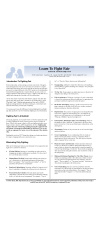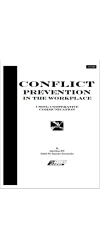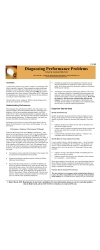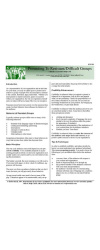Even the most experienced managers, supervisors, or executives forget about the Law of Unintended Consequences, which says that for every change or action, there are both positive consequences (which, obviously the manager wants), and negative unintended consequences (which the manager doesn’t want). Here’s more about this common and often catastrophic situation.
Mary is the head of a realty/real estate company. She decides to create a contest, where the real estate agent that sells the most property (in dollars), will receive a ten thousand dollar bonus. Makes sense. Motivation. Incentive.
At the end of the month, she sits at her desk totally perplexed. John, the resident high pressure salesperson almost doubled his sales for the “contest month”, easily winning the prize. Great! When she looks at the other sales figures, she finds that about half of the remaining real estate agents actually ended up with less sales. The net gain in sales for the entire office was…well, zero. Factor in the contest prize, and the office ran at a loss.
Not only that, but during the contest month, Mary had a constant stream of agents coming into her office complaining about John’s tactics, both with coworkers and clients. John stole clients from other reps, and went after the prize as if he was invading a country. There were even a few complaints from clients. What happened?
Law of Unintended Consequences, That’s What
Mary fell into the unintended consequences trap. When a manager implements a new decision there are several sets of outcomes or consequences that WILL occur. First, the intended consequence (what Mary wanted to happen, in this case higher sales, at least for one person). Second is unintended consequences. These are outcomes Mary did not anticipate. For example, by providing a large bonus, won via competition between agents, she created a situation where employees would be rewarded for doing better themselves, but also if their competitors (coworkers) did less well. Second, she set up a situation where the ONLY thing some employees focused on was “the sale”. John in particular, using high pressure sales techniques, sold more, at least temporarily, but also managed to alienate many existing and potential clients.
The result? Mary got what she wanted (sort of), and got a lot of what she didn’t want, even though here contest plan seemed good on the surface.
How Does This Happen?
Often managers don’t think through their ideas well enough to avoid unintended consequences. If they don’t examine their pet ideas critically, they are going to miss potential downsides to their ideas. It’s understandable in our busy, high pressure work world, but the risks are clear. Be careful what you wish for, because you might get it, and it may not be what you really thought you wanted!
Avoiding The Trap
- Before implementing any change, managers should always consider the two sides of the outcomes coin. Obviously, look at benefits. But flip the coin over and look at possible negative implications and consequences. Do this over several days to allow things to percolate, since the initial thinking will always be about benefits.
- Avoid impulsive decisions. Think. Reflect.
- Consult Others: It’s impossible for a manager to consider every possible consequence of a decision. In Mary’s situation, it might have been a good idea to talk to the real estate agents and explain the contest and ask a simple question: “Do you see any problems with this that might interfere with total sales?” The line employees usually are good at catching these things. Mary also could have talked to other real estate office heads to see if they have an insights or experience doing what Mary wanted to do.
- Research When Possible: Managers rarely, if ever, deal with situations that are unique. Whatever the manager wants to try, it’s been done somewhere, and probably many times over. With the Internet available as a quick research tool, it’s not difficult to do some Internet searches to see what others outside of her direct contacts have done, and experienced on the issue of bonuses and employee competition. If Mary had done this she probably would have come across an explanation about what “could” happen — negative side-effects of pitting employees against each other.
- Finally, avoid management fads. Jumping on the latest management fad — 360 feedback, TQM, BPR, whatever it is, without considering both intended and unintended consequences almost always fail (that’s why most fads are fads, not because they are bad ideas, but because people implement them without thought. Make sure you understand the tools connected with the fad before implementing.






